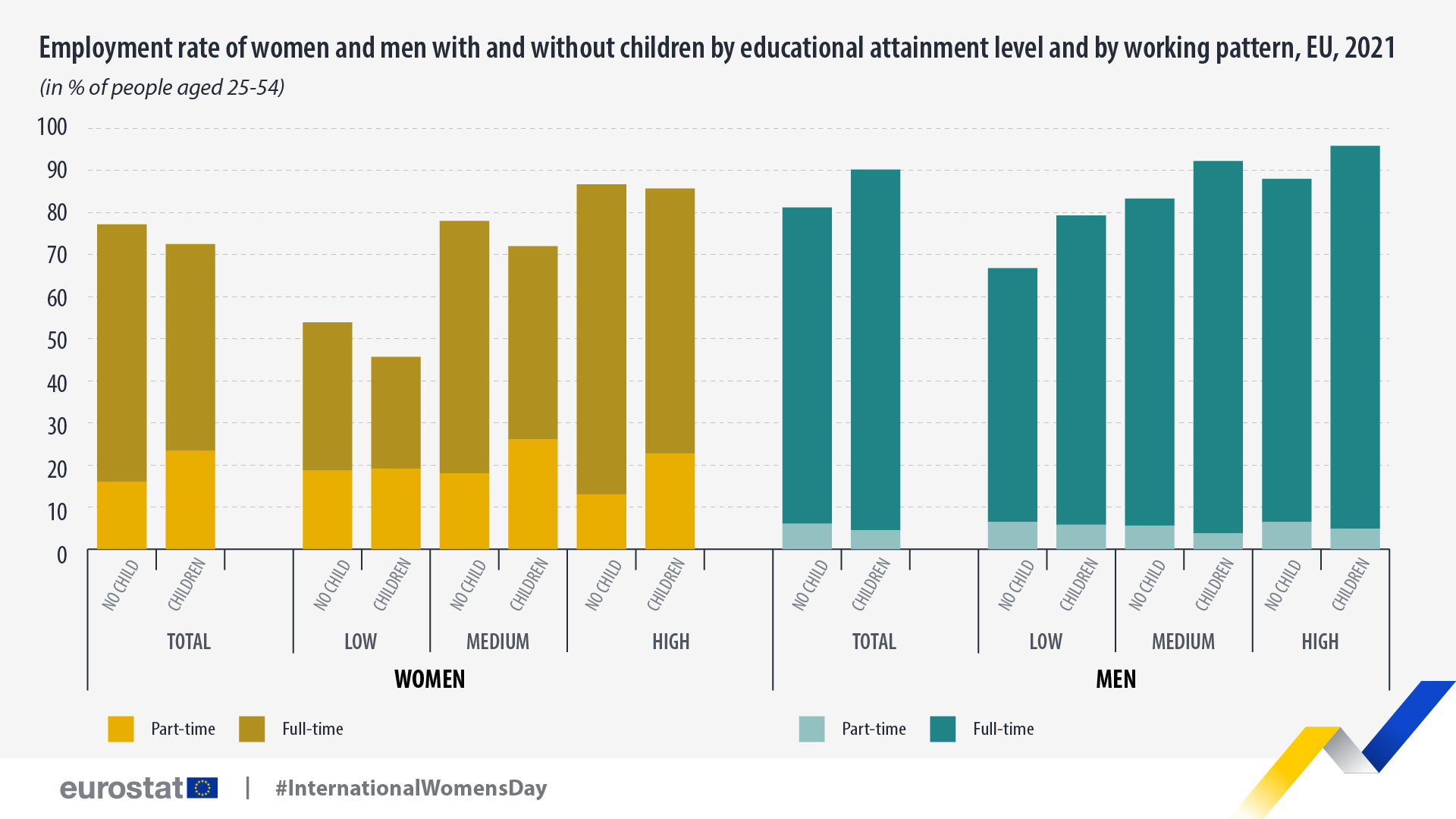Gender employment gap larger for parents in 2021

In 2021, 77% of women aged 25-54 without children were employed in the EU. On the other hand, women of this age with children had a lower employment rate (72%; -5 percentage points). Children in the household had the opposite impact on the employment rate of men in this age group: men without children had a lower employment rate than men with children (81% compared with 90%; +9 pp).
Comparing men and women, the gender employment gap reached 4 pp among people without children and 18 pp among those with children.
Moreover, the higher the level of education, the closer the employment rates between people aged 25-54 without and with children. Women with a low level of education recorded the largest difference with an employment rate of 54% for those without children against 46% for those with children (-8 pp.). On the other hand, employment rates were very close for women with a high level of education when comparing those without and with children (87% compared with 86%; -1 pp).
Men with a low level of education also showed the largest difference when comparing those without (67%) and with children (79%; +12 pp). Furthermore, for each level of education, the employment gap between those not having and those having children was positive and, in all cases, wider for men than for women.
This article is part of a series of articles published to mark International Women’s Day.
Source data: lfst_hheredty and Eurostat ad-hoc extraction
Part-time employment among women with a medium or a high level of education more affected by the presence of children
In 2021, slightly more than one in six employed women with a high level of education and without children worked part-time compared with more than one in four who had children (15% compared with 26%; +11 pp). For women with a medium level of education, the gap was even larger between the part-time employment rates (23% for women without children and 36% for women with; +13 pp).
Meanwhile, the share of employed men working part-time across all levels of education was higher for men without children than with.
Would you like to know more?
On Monday, from 10:00 AM to 11:AM CET, Eurostat is hosting a webinar on women in science, technology and research. The webinar will be streamed on the Eurostat website and Eurostat Facebook account. It is open to anyone interested, and there is no need to register. There will be an opportunity to ask questions via Slido.
For more information
- Statistics Explained article on employment characteristics of households
- Statistics 4 Beginners on the labour market
- Thematic section on employment and unemployment
- Database on employment and unemployment
Methodological notes:
- Educational attainment levels are classified according to the International Standard Classification of Education (ISCED): low level of education refers to ISCED levels 0-2 (less than primary, primary and lower secondary education), medium to ISCD levels 3 and 4 (upper secondary and post-secondary non-tertiary education) and high to ISCED levels 5-8 (tertiary education). The level of educational attainment means the highest level of education successfully completed.
- Part-time employment rate: people in employment (whether employees or self-employed) who are not working full time in their main job (the distinction between full-time and part-time work is generally based on a spontaneous response by the respondent). This indicator shows the proportion of persons employed part-time among all employed persons.
If you have any queries, please visit our contact us page.

